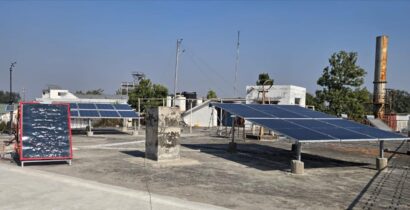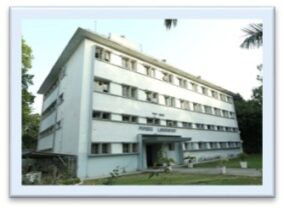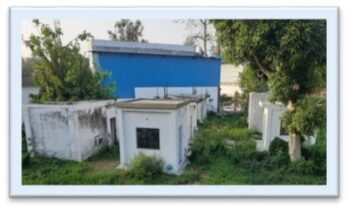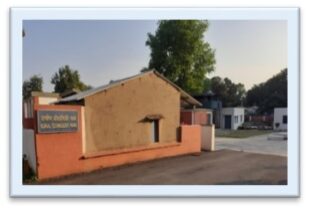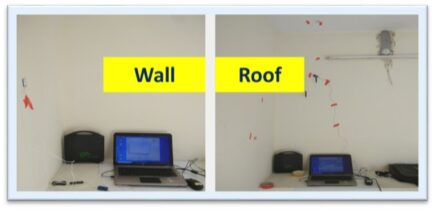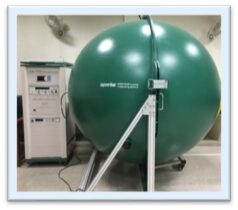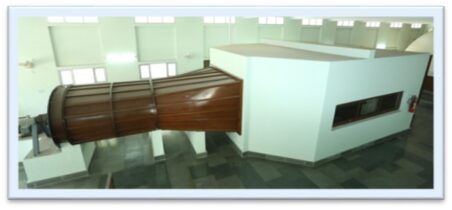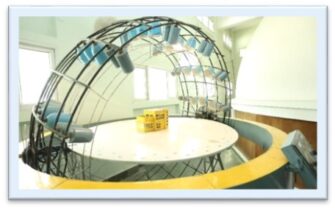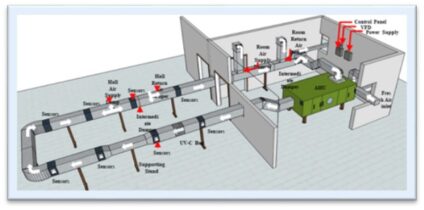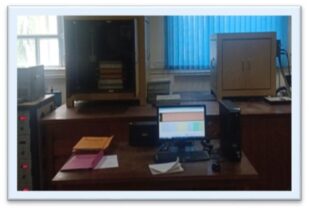
Architecture and Planning Division is devoted to R&D in the areas of Architecture, Urban and Rural Planning, Cost effective and affordable Housing. Energy Efficient and Green Buildings, Industrialized Building Systems are the present focus areas of the division. Major sub areas of the division include Shelter Planning, Education and Health Care Buildings and Rural Buildings & Environment.
Focus Areas of R&D
- Green and Energy Efficient Buildings
Present Day energy crises necessitate the demand of integrated approach of energy efficient buildings, as buildings consume substantial amount of energy. therefore, environmental protection and enrgy efficiency of buildings are the major concern in the present day scenario. Design parameters contributing towards eco-friendly and energy efficient buildings and the salient features of Green Building which need to be considered are:
- Site Planning
- Building envelope design
- Building system design: HVAC (heating, ventilation and air conditioning), lighting, plumbing, electricity and water heating
- Integration of renewable energy sources to generate energy on-site
- Water and waste management
- Selection of ecologically sustainable materials
- Quality of indoor ambience
- Minimal disturbance to landscapes and site condition
- Use of Recycled and Environmental Friendly Building Materials
- Use of Non-Toxic and recycld/recyclable Materials
- Efficient use of Water and Water Recycling
- Use of Energy Efficient and Eco-Friendly Equipment
- Use of Renewable Energy
- Indoor Air Quality for Human Safety and Comfort
- Effective Controls and Building Management Systems
- Industrialised Building Systems
- Cost Effective and Affordable Housing
- Solar Application in Buildings
Major R &D Activities Undertaken
- Development of space norms & standards for human settlements.
- Development of low cost technologies for economically weaker section.
- Development of space norms & standards for educational & health care buildings.
- Development of guidelines, bye-laws code of practice for use of glass in buildings.
- Development of database generation of heritage buildings for preservation, restoration & conservation.
- Development of guidelines for physically challenged.
- Development of Industrialized building systems for low & medium rise structures.
- Design & Development of instant temporary & permanent shelters for disaster poor areas.
DEVELOPMENTAL PROJECTS – SHELTER PLANNING
- Planning & design of Mathura Refinery Township for 15,000 population with design of various types of residences, infra-structural facilities, shopping center & schools etc.
- CISF housing complex having residential and administrative facilities, BHEL, Haridwar.
- CSIR complex having offices and residential facilities, Palampur (HP).
-
NIVH complex having director’s bungalow, staff residences and guest house, Dehradun
- Design of Delhi Public School (DPS), Mathura Refinery Township, Mathura
- Planning and design of CISF complex, refinery site, Mathura, CISF complexes, Phase I&II, having different type of residences along with administrative building, commandant house and hostel accommodation, at Bahadurgarh
- Design of Officers club building and Mult ipurpose hall at Mathura Refinery Township, Mathura
- Civil Aviation Complex, BHEL Haridwar
- Design of LIC branch office building, Nurpur (HP)
- Housing for staff of IOC at Panchkula (Haraya na)
- Design of Guest House, Traini ng Centre & Laboratory buildings at IIP Dehradun
- Way side amenities for tourists, Uttarakhand
MAJOR SPONSORED R&D PROJECTS
USE OF GLASS IN BUILDINGS
Guidelines for use of glass in buildings
- Properties and uses of different glass types (annealed, laminated, tempered, insulating & reflective etc.)
- Data regarding heat gain, sound in sulation, safety & security, thermal breakage, human impact, fire resistance and strength of glass types to enable user to select specific type of glass.
- Tools to determine appropriate thickness for different type of glasses with respect to wind pressure as per location, height of the building, size of the glass pane and support conditions.
- Different types of glazing systems such as curtain walling, bolted glazing, suspended glazing, traditional frame glazing and fin & cable etc.
- Dos and don’ts for use of different types of glass in buildings.
- Bye-laws for use of glass in buildings for all major cities in India covering all six wind zones.
- Formulated code for use of glass in buildings and submitted to BIS, New Delhi.
- Published a book on Use of Glass in Buildings, ABC Publications, New Delhi.
INDUSTRIALIZED BUILDING SYSTEM FOR AFFORDABLE QUALITY HOUSING
- Prepared the State-of-Art Report on prefabricated building systems for low and medium rise structures; Architectural design of two / three bed room units and cluster planning; Design and development of different systems for construction of most efficient, environment friendly and industrialized medium-rise housing of two / three bedroom units.
TRADITIONAL KNOWLEDGE DIGITAL LIBRARY (TKDL), CSIR NETWORK PROJECT ON BUILDING MATERIALS, CONSTRUCTION TECHNOLOGIES & ARCHITECTURE
- Prepared a digital library for preservation, protection and wealth creation of traditional knowledge in the area of building materials, construction technologies and architecture covering foundations, walls, roofs, floors etc., which will provide easy accessibility to structured data for wealth creation and R&D promotion.
EDUCATIONAL & HEALTH CARE BUILDINGS
The R&D on Educational and Health Care Buildings cover multi-faceted aspects on buildings such as planning, design, exploitation of local materials and traditional skills, functional requirements such as Optimization of Spaces, Furniture and Fixtures, Cost Optimization, Environmental Preservation and Experimental Constructions.
DEVELOPMENTAL PROJECTS – Educational Buildings
Design and Development of 350 Navodaya Vidyalaya Complexes at different Geoclimatic regions of the countries
Central Building Research Institute was appointed as Nodal Agency by Ministry of Human Resources Development, Govt. of India, for planning and designing of Navodaya Vidyalaya Complexes throughout the country.
A typical Navodaya Vidyalaya Complex includes one school building for 560 students for classes from VI to XII (2 sections of 40 students in each class), Dormitories, Warden’s residences, Dining and Kitchen facilities, Teacher’s houses infrastructure facilities i.e. roads, water supply, sanitation, electrification etc. The total built-up area of each NV complex is of the order of 12,000 m2 in a land of about 8 to 10 Hectares. CBRI provided S&T backup to the entire building programme including the following activities for a typical school complex:
- Survey of school sites, Soil investigations and foundation designs
- Formulation of space norms for different outdoor and indoor activities.
- Architectural design of individual buildings and preparation of master plans
- Structural analysis and designs
- Use of local building materials and innovative construction techniques for different regions.
- Demonstration of new construction techniques
- Bill of quantities and cost estimates
- Guidance for quality control of construction
- Overall planning and guidance to the project
MAJOR SPONSORED R&D PROJECTS
- Operation Block Board: Study of existing school buildings indifferent parts of the country sponsored by NIEPA, N.Delhi.
- Sarva Shiksha Abhiyan, Uttarakhand
- Polytechnic Complex, Silvasa
- Kendriya Vidyalya at IIP Dehradun
- 2500 Primary Schools in U.P
- Kendriya Vidyalayas and SFF school complex
- Design of hostels
- Building detailing and fixtures for kitchen and bath
DEVELOPMENTAL PROJECTS – Health Care Buildings
- Under World Bank project, 616 health care buildings in the state of U.P and 500 buildings in the state of Karnataka were constructed, based on the studies on space norms and planning guidelines conducted at the Institute.
- A large number of health sub centre, primary health centres, upgraded PHCs and medical store buildings were constructed in the states of Manipur and A. P.
- Medical College Complex, Haldwani, Uttarakhand
- Design on guidelines for Barrier-Free Built-Environment- based on the needs and
- Requirements of the physically handicapped persons, design guidelines are being prepared.
RURAL BUILDING & ENVIRONMENT
R& D Work in the field of Rural Buildings & Environment has been conducted including studies on rural housing, development of appropriate construction technologies, improvement of traditional houses, low cost houses and other buildings and rural sanitations. Disaster mitigation for housing in cyclone affected areas including relief & rehabilitation and training to various organizations involved in rural development are some other areas of work.
MAJOR AREAS OF R&D ACTIVITIES
- Technologies for improvement in the performance of traditional houses made of locally available materials like mud and thatch
- Low-cost construction technologies for rural houses using durable materials like brick, cement concrete, steel, stone and timber
- Construction technologies for disaster (cyclone/flood) mitigation and relief and rehabilitation work
- Low cost sanitation and waste water disposal systems
NEW CONSTRUCTION TECHNIQUES & BUILDING SYSTEMS
- Non-erodable mud plaster
- Plinth protection of mud walls
- Improved method of making fire-retardent thatch roof
- Ferro cement plaster for mud walls and fire-retardent thatch roof
- Fixtures for frameless doors and windows
- Pedestal piles for foundation
- Prefab brick panel system
- Prefab concrete panel system
- Prefab jack-arch panel system
- Integrated thin wall and column system
- Precast concrete panel and Joist system
- Instant shelter for disaster relief
- Un-reinforced pyramidal brick roof
- Houses for rural poor in different regions
SANITATION & ENVIRONMENTAL IMPROVEMENT
- Low cost latrines
- Low cost latrines for high water table area
- Waste water disposal system
- Ferro Cement unit for waste water disposal system
MAJOR SPONSORED R&D PROJECTS
- U.N.D.P Global Project on low cost sanitation
- Commonwealth Regional (Asia/Pacific) Rural Technology Programme
- Improvement in fixed dome type and KVIC design plants
- E.W.S Houses for Ghaziabad Improvement Trust
- E.W.S and L.I.G Houses, NOIDA
- Design of institutional and other buildings for Gandhi Gram Rural University, Madhurai, Tamil Nadu
- Rural houses for Indira Avas Yojana
- Cyclone resistant houses in Andhra Pradesh
- Heat insulation and water proofing treatment of residential buildings, ONGC, Ankaleshwar, Gujarat
- Evaporative cooling system for I.O.C., Durgapur, West Bengal
- Evaluation and design of foundation of existing EWS Houses at NOIDA
- Training to NGO’s from various states and India on low cost building materials and construction technologies and sanitation.
DEVELOPMENTAL PROJECTS – Rural Buildings and Environments
- Scientific study on revision of unit cost under Indira Avass Yojana in various geoclimatic zones of the country
The objectives includes to study the existing typology of rural housing and to record charges undergone in last three years; To suggest the type of construction vis-à-vis geo-climatic conditions, soil condition, availability of local materials and cultural factors; To assess the role and need of cost-effective and environment –friendly technology; To suggest the unit cost of construction for an IAY house of plinth area 20 sqm. for the various geo-climatic conditions, soil condition, availability of local materials and cultural factors To assess the availability and requirement of technical capacity among the govt. personnel responsible for implementing rural housing program.
- Work shed scheme for Khadi artisans – KVIC, Mumbai
Type plans have been developed for the work shed for Khadi Artisans across the country.
.







